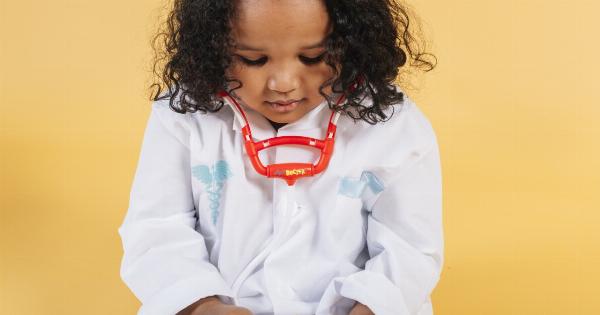Bright children, also known as gifted or talented children, are those who display exceptional abilities and potential in one or more areas. These children possess a higher level of intelligence, creativity, and talent compared to their peers.
They stand out in terms of their cognitive, emotional, and physical development, often achieving milestones at a faster rate. Understanding who these bright children are and how they differ from their peers is crucial for their proper identification and support.
Identifying Bright Children
The identification process for bright children can vary depending on the country, educational institution, or specific program in question.
While there is no universally agreed-upon definition or standard for giftedness, certain characteristics can help in identifying these children:.
1. Advanced Cognitive Abilities: Bright children often have exceptional memory, problem-solving skills, abstract and critical thinking abilities, and a greater capacity for processing information.
2. High Academic Achievement: These children typically perform significantly better than their peers in various academic areas.
3. Creativity and Imagination: Bright children exhibit high levels of creativity, originality, and imaginative thinking in their projects, artwork, or storytelling.
4. Intense Curiosity: They display a deep interest in learning and a strong desire to explore and investigate.
5. Rapid Learning: Bright children have the ability to grasp new concepts quickly and easily, often requiring less repetition or practice.
6. Emotional Sensitivity: They can be highly sensitive to their own emotions and the emotions of others, showing strong empathy and compassion.
7. Exceptional Focus: Bright children often display intense concentration and focus on tasks that interest them, sometimes to the point of becoming absorbed in their work.
8. Advanced Language Skills: They may have an extensive vocabulary, communicate fluently, express complex ideas, and understand abstract concepts from an early age.
9. Leadership Qualities: Bright children may demonstrate natural leadership skills, taking charge in group settings or showing a strong ability to influence others positively.
10. Unusual Interests or Hobbies: They may have a strong passion or obsession for a particular subject, often surpassing their peers’ level of knowledge in that area.
The Challenges Faced by Bright Children
While bright children possess exceptional abilities, they also face unique challenges that require attention and support. Some of the common challenges bright children may encounter include:.
1. Boredom and Understimulation: Bright children can easily become bored or frustrated in traditional classroom settings if the curriculum does not meet their intellectual needs.
2. Social and Emotional Development: They may struggle with social interactions due to their advanced intellectual abilities or experience difficulties relating to peers who may not share their interests or level of understanding.
3. Perfectionism: Bright children often set high standards for themselves and can experience anxiety or stress when they feel they have fallen short of their own expectations.
4. Unrealistic Expectations: The pressure to constantly excel can be overwhelming for bright children, leading to feelings of self-doubt or imposter syndrome.
5. Lack of Challenge: Without appropriate academic challenges, bright children may lose motivation, become disengaged, or fail to reach their full potential.
6. Difficulty Fitting In: As bright children can be perceived as different or eccentric by their peers, they may struggle to find genuine connections and friendships.
Supporting and Nurturing Bright Children
Recognizing and understanding the needs of gifted children is essential to provide them with appropriate support and opportunities to thrive. Here are some strategies for supporting and nurturing bright children:.
1. Differentiated Education: Tailor educational programs to meet the specific needs and abilities of bright children, providing them with intellectual challenges and opportunities for acceleration.
2. Enrichment Programs: Offer extracurricular activities, such as advanced classes, workshops, or clubs, that allow gifted children to explore their interests further and interact with like-minded peers.
3. Individualized Learning Plans: Develop personalized learning plans that cater to the unique strengths and interests of each bright child, allowing them to pursue advanced coursework or specialized projects.
4. Emotional Support: Provide a nurturing and supportive environment that helps gifted children navigate their unique emotional challenges and develop healthy coping mechanisms.
5. Mentorship Programs: Pair bright children with mentors who can guide and inspire them in their areas of interest, providing them with role models and opportunities for personal and academic growth.
6. Peer Support: Encourage interactions with other bright children through support groups, gifted programs, or online communities, helping them build friendships and connections with like-minded individuals.
7. Parental Involvement: Involve parents in the identification and support process, providing them with resources, information, and strategies to understand and nurture their gifted child effectively.
Cultivating the Potential of Bright Children
The potential of bright children is immense, and it is crucial to create an environment that nurtures their talents and allows them to reach their full potential.
By understanding their unique characteristics and challenges and offering appropriate support, we can help bright children thrive academically, emotionally, and socially. Celebrating their achievements and guiding them towards their passions will prepare them for a future where their exceptional abilities can contribute positively to society.





























